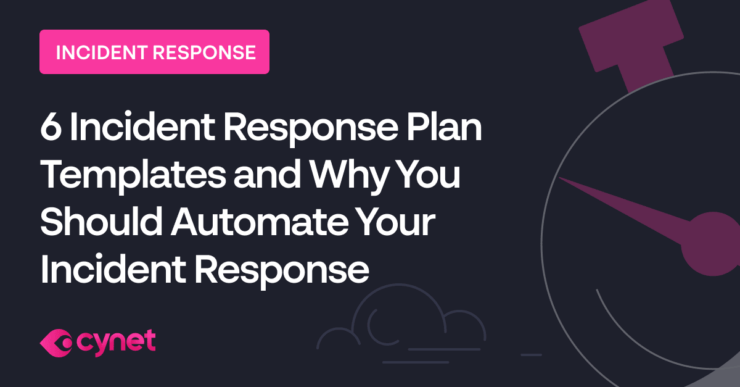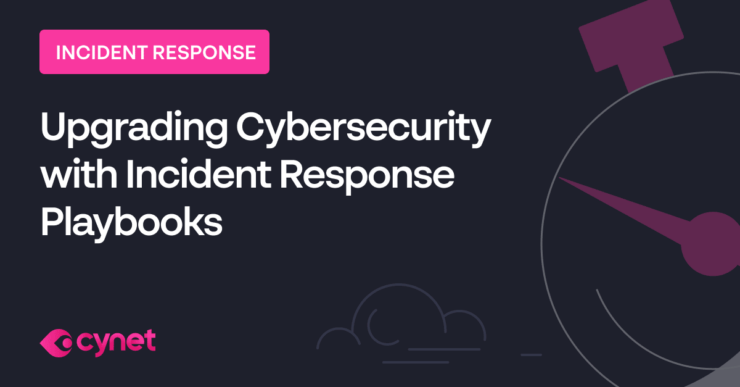Last Updated:
January 17, 2025
Security platforms refer to software or hardware systems that provide security solutions and services for protecting networks, devices, and data from various cyber threats. These platforms can include a variety of features such as firewall protection, intrusion detection and prevention, antivirus and anti-malware, encryption, and identity and access management. They can be used by organizations of all sizes to safeguard their information technology infrastructure and protect against unauthorized access, data breaches, and other cyber attacks.
This is part of a series of articles about incident response.
The Need for Security Platforms
Security platforms are important for businesses because they help protect against the wide range of cyber threats and attacks that organizations face today. These threats can include malware, ransomware, phishing, and denial-of-service attacks, as well as more advanced threats such as APTs (advanced persistent threats) and zero-day exploits. They can have severe consequences for a business, including financial loss, reputational damage, and disruption of operations.
A security platform can help mitigate these risks by providing a multi-layered defense system that can detect and prevent cyber threats from entering the organization’s network and systems. It can protect sensitive data and intellectual property from unauthorized access or theft, keep the corporate networks and systems running smoothly, reducing the risk of downtime, and prevent financial losses due to fraud, extortion, or reputational damage.
Additionally, a security platform can also help organizations comply with various regulations and industry standards such as HIPAA, PCI-DSS, SOC 2. It can also provide visibility and control over the security posture of the organization, which can help to identify and resolve vulnerabilities, and ensure the security of sensitive data. This can ultimately help organizations to maintain customer trust and confidence.
The main advantage of having a centralized security platform is that it makes it easier to manage and synchronize cybersecurity efforts. In addition to expanding visibility, it integrates different tools and simplifies the overall security management process.
3 Key Elements of a Cybersecurity Platform
A cybersecurity platform must address the main challenges security teams face. Most platforms achieve this goal by adhering to the following three pillars:
Security Automation
Security teams need to handle many routine tasks quickly and efficiently to maintain the health of the security architecture while also conserving resources for other responsibilities. Since many of these tasks are repetitive, they can be automated to drive more efficiency and support the work of security teams.
Cybersecurity platforms enable teams to automate security tasks using various methods, including APIs, scripts, and playbooks according to security best practices. For example, teams can use security automation to automatically generate security profiles and configuration files or create web portals that offer user-friendly access to API functionality.
Threat Prevention
A comprehensive security program must cover threat prevention, in addition to detection and response. Programs and tools that focus mainly on threat detection assume that an attack has already breached a protected system and can potentially cause damage before the team responds. Prevention capabilities attempt to catch attack attempts before they succeed.
A cybersecurity platform must provide prevention-focused security capabilities to support the team’s efforts in identifying and blocking attacks before they can pose a threat to the protected systems. Prevention-focused security functionality is usually based on artificial intelligence (AI) and machine learning (ML) technologies that can process massive volumes of security data, identify threats, and trigger automated responses, such as blocking attacks and updating firewall rules.
In my experience, here are tips that can help you better select, implement, and optimize security platforms:
- Leverage behavior-based detection alongside signature-based
Ensure the platform incorporates behavior-based threat detection in addition to traditional signature-based methods. This dual approach can help detect sophisticated threats, such as fileless malware or insider threats, that bypass signature-based defenses.
- Incorporate attack surface management (ASM)
Look for platforms that offer or integrate with attack surface management tools. ASM continuously identifies and monitors external-facing assets, helping your organization proactively manage exposure and close potential entry points.
- Check for built-in incident response collaboration features
Security platforms with built-in collaboration tools (e.g., chat or shared dashboards) enable teams to manage incidents more efficiently. This feature is especially useful for coordinating between SOC, IT, and external response teams during major incidents.
- Enable customizable and automated compliance frameworks
Choose platforms that offer pre-built, customizable templates for different regulatory frameworks (e.g., HIPAA, PCI-DSS). Automated mapping and reporting against these frameworks can reduce the burden of continuous compliance management.
- Assess the platform’s threat-hunting capabilities
Opt for platforms that facilitate proactive threat hunting, providing robust search functionalities, historical data analysis, and intuitive visualization. This empowers your team to uncover hidden threats and assess trends beyond automated alerts.
Eyal Gruner is the Co-Founder and Board Director at Cynet. He served as the company’s CEO for nine years, guiding its growth from the very beginning. He is also Co-Founder and former CEO of BugSec, Israel’s leading cyber consultancy, and Versafe, acquired by F5 Networks. Gruner began his career at age 15 by hacking into his bank’s ATM to show the weakness of their security and has been recognized in Google’s security Hall of Fame.
Integrated Platform
Security teams often struggle with managing their security stack, as the modern stack is composed of many disparate security tools. It requires configuring, monitoring, and managing each tool, causing operators to context switch between the various dashboards. This reduces efficiency and significantly slows responses to cyber threats.
A cybersecurity platform must address this challenge by consolidating security monitoring and management into one centralized solution. By providing security integration, cybersecurity platforms help:
- Enhance the team’s threat prevention, detection, and response efforts.
- Provide operators with access to multiple data sources and enables them to centrally trigger remediation actions across several systems.
- Simplify configuration monitoring and management, ensuring teams can quickly detect and respond to critical misconfigurations.
What to Look For in a Security Platform
The type of security solution you choose will depend on your use cases, and the types of systems you want to secure. For example, your priority might be email, endpoint, or firewall security. Once you’ve narrowed down the focus of your cybersecurity strategy, you can start evaluating vendors and tools based on their capabilities.
When looking for a security platform, a business should consider several factors:
- Scalability: The platform should be able to scale to meet the needs of the organization as it grows and evolves.
- Comprehensive coverage: The platform should provide a range of security capabilities, such as firewall protection, intrusion detection and prevention, identity and access management, and incident response, to protect against a wide range of cyber threats.
- Integration: It should integrate seamlessly with other security systems and tools that the organization is already using, to provide a unified view of the organization’s security posture.
- Automation and orchestration: It should have the ability to automate and orchestrate security operations, which can help to reduce the time and effort required to manage and respond to security incidents.
- Reporting and analytics: It should provide detailed reporting and analytics capabilities, which can help the organization to identify and respond to security incidents quickly and effectively.
- Compliance support: It should provide features that can help organizations comply with various regulations and industry standards.
- Ease of use: It should be easy to use and manage, which can help to reduce the burden on IT staff and ensure that security policies are consistently enforced.
- Technical support: The platform should come with a robust technical support service that can help to resolve any issues or questions that may arise. Ideally, the vendor will become an active partner in your organization’s security.
- Continuous updates: The vendor should provide continuous updates and improvement to keep up with the ever-changing threat landscape. There should at the very least be automatic alerts for newly identified bugs and updates.
Cynet 360 AutoXDR: A Security Platform for Today’s Threats
Cynet provides a security platform that provides threat visibility into endpoints, users, networks, SaaS and cloud applications, and automates the response to those threats. By combining and integrating multiple capabilities, including EDR, NGAV, user behavior analytics, network detection and response, and deception, Cynet AutoXDR delivers comprehensive coverage and increases the efficiency of security teams.
Learn more about Cynet AutoXDR



